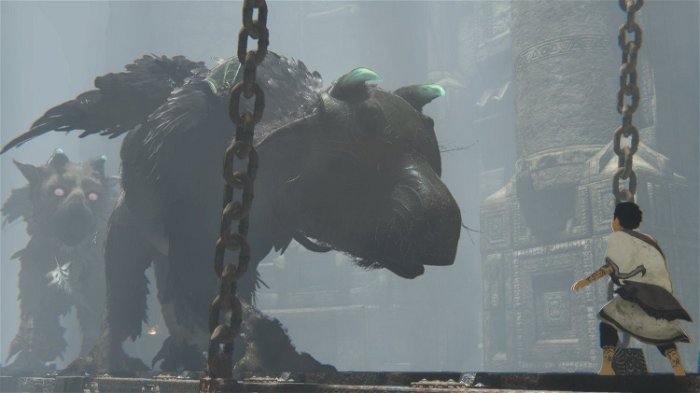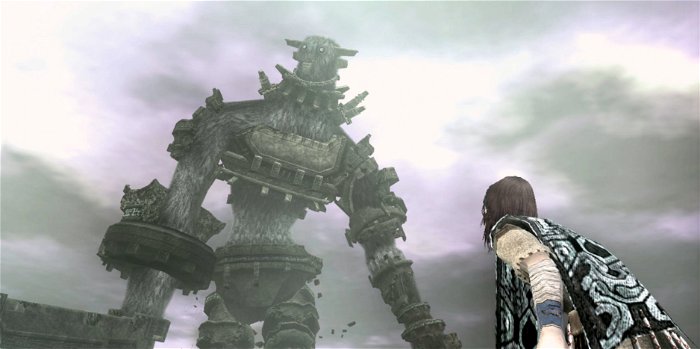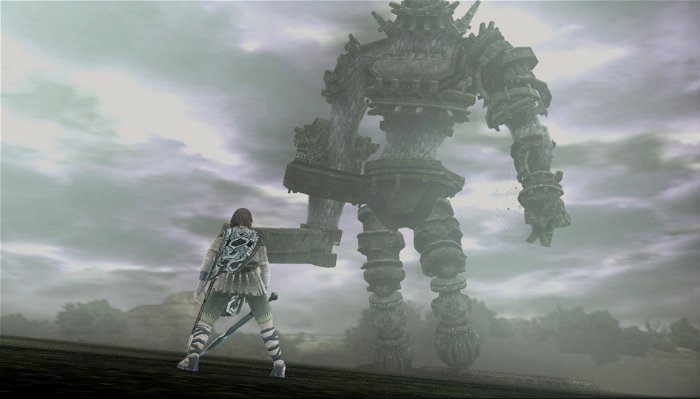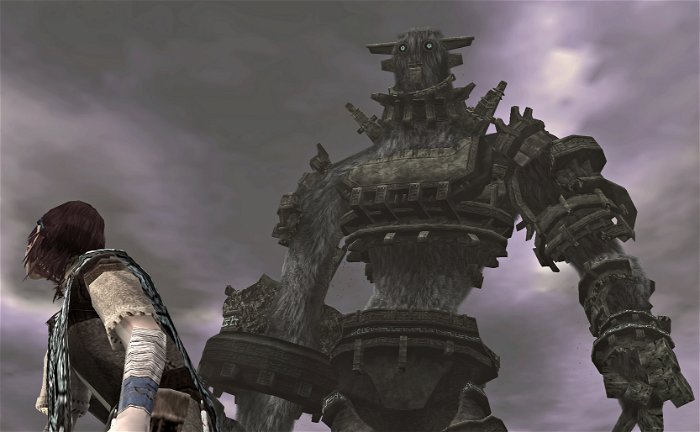It might be hard to believe for some, but it’s been over eleven years since Team Ico (the studio, now called GenDesign, behind Shadow of the Colossus) has released a videogame. That long streak has now been broken as the long-gestating The Last Guardian is finally out for PlayStation 4. But, it does make you wonder how and why Team Ico was afforded so much time and patience by Sony. Looking at PlayStation’s first-party ecosystem, every single one of the platform’s first-party studios has put out a couple of titles since 2005. What makes Team Ico so special that it’s allowed to work on a single game for over a decade?

Whether or not The Last Guardian pans out, Team Ico’s revered history and overall impact on the games industry can’t be taken for granted. The never-ending love and respect that studio receives time and time again stems solely from its second videogame, Shadow of the Colossus; a title unlike any other.
When Shadow of the Colossus was first released in 2005 for the PlayStation 2, it was met with an exceptional critical response. It was hailed as one of the best games that year, and is considered by most to be the best game on Sony’s second home console. The breathtaking art direction, eerie atmosphere, subtle storytelling, and great design combine for a videogame experience that expertly showcases why games can be art. Shadow of the Colossus doesn’t contain your typical gameplay and open-world design. It’s the complete opposite from nearly every single modern game that’s out there.
Without much to go on, save for a quick cutscene showing the game’s protagonist carrying a dead princess and setting her down in a temple, you’re forced to start your journey. With only your horse Agro by your side, you assume that you have to find a way to revive the dead princess. The game’s mammoth world is open to you from the start, and the only you can navigate your surroundings is by using your sword as a compass. You can’t fast travel, look for landmarks, or complete any side quests. Shadow of the Colossus doesn’t tell you anything beyond the minimum essentials, and that’s what makes it so fascinating.

Of course, you eventually learn that you have to combat several colossi and take them down. Though, at first it seems like they’re some sort of evil entity that you need to get rid of, the game does a great job of revealing the shocking truth. Without spoiling too much, the game’s main villain isn’t who you do think it might be.
Shadow of the Colossus is one of the very few games that isn’t afraid of holding back. It’s a quaint experience, despite being a game that has to keep the player’s attention. Shadow of the Colossus doesn’t rely on bombastic action, traditional storytelling, or even dialogue to interest its players. By being a complete mystery to you throughout most of the experience, you can’t help but be drawn in and find out what the game is really about.

Fast forward eleven years and there are a few indie titles attempting to tell stories in original and weird ways, but, the triple-A scene still lacks the subtlety of Shadow of the Colossus. What the studio was able to achieve with its sophomore project still stands out among the big budget games a decade later.
Lead designer on the game, Fumito Ueda, held his team to a high standard throughout the game’s development. Ueda, who has admitted time and time again that he is a perfectionist, felt only one or two out of 500 artists who applied to work on Shadow of the Colossus met his criteria. He often demanded dramatic changes to design during development until it matched his vision for the game. Shadow of the Colossus’ producer, Kenji Kaido, was also equally challenging to all of the designers, expecting them to nail realistic physics in relation to the way the game’s protagonist interacted with the colossi.

For example, if a colossus were to shake, Kaido wanted the main character to react and shift realistically to these sudden movements. Also, if a colossus’ limb was laid out horizontally, the player would have to be able to walk and run on the limb as if it were a flat surface. Kadi often referred to this concept as a “organic collision deformation,” and it was difficult for the studio to achieve what both Kaido and Ueda demanded.
Ueda also knew from the start that Shadow of the Colossus only needed to feature the 16 colossi as the game’s only enemies. He wanted players to combat one colossus at a time, and that each colossus would have different fighting styles. Each boss battle in the game is as much of a puzzle to solve as it is a stunning combat encounter. For instance, one colossus in the game is able to fly, demanding the player to find a way to reach and climb the creature without giving any hints. Another towering behemoth lives underwater, and the player has to constantly force it to the surface, enabling them to strike it. By not having any other enemy encounters besides the colossi, Ueda successfully focuses all of the attention on these 16 boss battles, which are all meticulously crafted and breathtaking.

Another important aspect of Shadow of the Colossus is your relationship with your horse, Agro. This theme of companionship between the player and the horse was vital for Ueda and his team to get right. These bonding relationships between you and your sidekick are the only thing that binds all three of Team Ico’s games. In Ico, the player guides a princess throughout the journey, and in The Last Guardian, the game’s whole focus is on the young boy’s interesting and dynamic relationship between the now instantly-recognizable birddog. This bond that the player can’t help but develop with the sidekick usually culminates in an emotional narrative climax.
In Shadow of the Colossus, Agro often ignores the player’s orders, and is quite frustrating to control. According to Ueda, this was intentional, as “a real horse … doesn’t always obey. It’s not like a car or a motorcycle; it won’t always turn when you say ‘turn!'”
Though, even with everything the game nails, from its visuals, to its harmonious soundtrack, it certainly isn’t without its flaws. For one, some of Shadow of the Colossus’ controls are unresponsive, especially when climbing the colossi. But even still, it still remains a gem of a game. An experience that’s so memorable and truly remarkable that it allowed its developer to remain largely dormant for eleven years.




